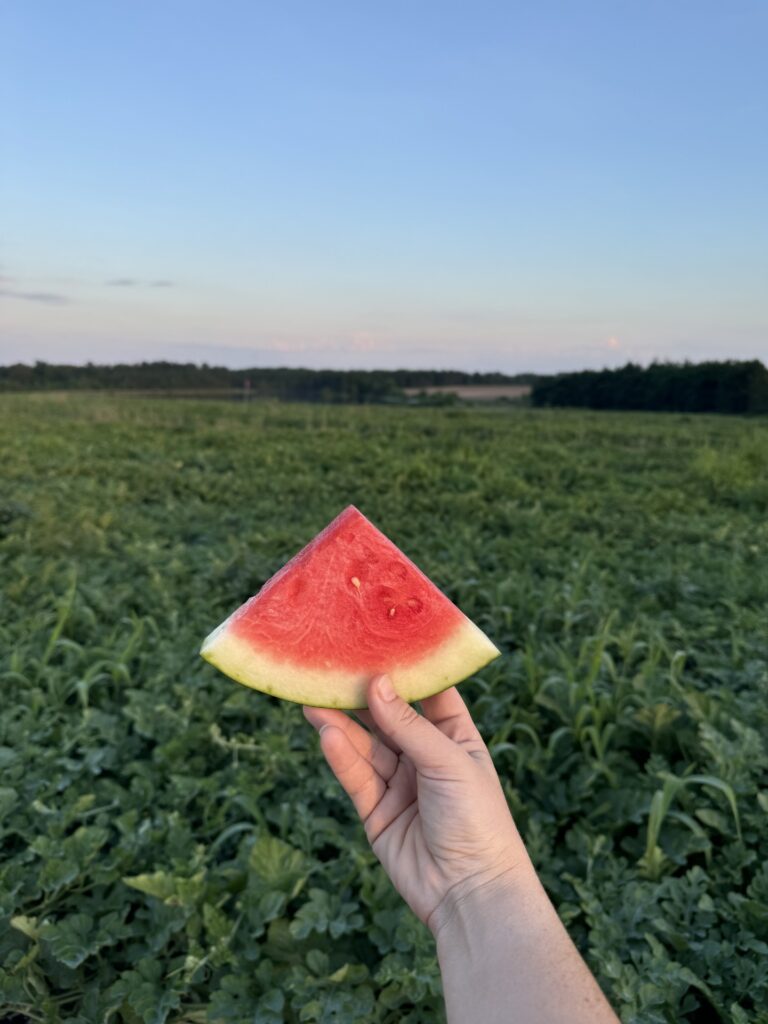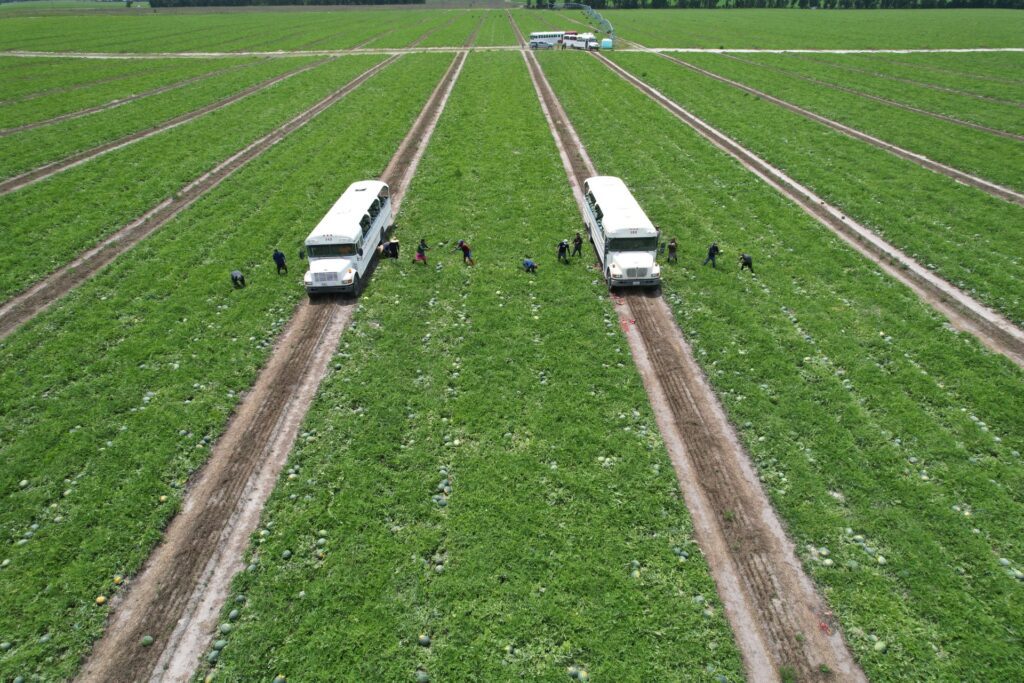Hot, Dry Conditions a Boon for Florida Watermelon Growers
by REBEKAH PIERCE
photos provided by the FLORIDA WATERMELON ASSOCIATION
There is perhaps no single food that’s quite as synonymous with summer as the watermelon. Yet the most important thing that Trey Miller, chairman of the Florida Watermelon Association Board, wants you to know is that watermelon shouldn’t just be a treat reserved for the hottest months of the year.
“They’re not seasonal anymore,” he says, explaining that in Florida, there are two distinct watermelon growing seasons. One — which is just about to wrap up — started March 1 and ends about July 1. The second growing season falls between October and Christmas. Out of all the states on the Eastern seaboard and the Midwest, Florida offers the longest growing season.

Though not a record-breaking year by any means, Miller says the 2025 season has treated Florida’s watermelon growers quite well so far.
“The South Florida season was really good. It’s about a quarter or halfway through in North Florida,” he says, adding, “South Florida had a really high yield.”
He says the high yields are, in part, a result of favorable weather conditions that made for a mostly dry, hot growing season.
“Most people think watermelons like a lot of water, but that’s not the case. You might lose a little bit of size because it’s a more stressful growing season when it’s really hot and dry, but the quality was excellent and the yields were excellent as well,” he continues.
Miller says the wetter, cooler weather experienced throughout much of the country this year has impacted sales somewhat, though not enough to raise concern.
“Memorial Day was an ‘okay’ holiday for us,” he explains. “The weather played a role in the Northeast and Midwest because nobody was outside barbecuing, going out on the boat, so sales were a little less.” He indicates that things should begin to change soon, and that there’s been a slight uptick since the holiday weekend with sales on the rise as the weather improves.
Miller speaks from experience as he’s got boots on the ground as the Chief Operations Officer at Melon1. The largest watermelon grower, packer, and shipper in the country, Melon1 provides fruit year-round to customers all over the nation.
“We have more than 30 partner growers that we work with off a handshake deal,” Miller explains. “Some of them have been with us for 30 years.”
Melon1 has growers and packing locations up and down the East Coast and into the Midwest. Unlike many companies of its size, Melon1 is unique because it harvests, packs, warehouses, ships, and sells all of its own fruit. All the farms are family-owned, with about 1,200 acres in South Florida that Melon1 grows itself. Beyond growing, harvesting, and shipping, Melon1 is on the cutting edge of research into best practices and techniques for watermelon growing as well.

The Florida Watermelon Association Board is similarly working at the front lines, conducting test trials with the University of Florida as well as the state’s many agricultural extensions. Two of the biggest challenges for growers that researchers hope to solve include Fusarium wilt and whiteflies, the latter of which has proved to be a substantial challenge for Florida watermelon growers.
The pest, according to Miller, is a carrier of hundreds of diseases and can easily wipe out a field, making the fruit unharvestable.
“In South Florida, it’s not about when you get a whitefly problem,” he says. “It’s just how bad. There’s nothing you can do about it. You can’t kill them. They’re just there.”
Multiple years of field trials haven’t yielded significant results, but Miller is optimistic that with further research and a unified effort, the whitefly problem is a challenge that can be overcome.
As with most agricultural commodities, the watermelon industry is always evolving to rise to the occasion and address customer demands.
“We used to grow primarily the traditional seedless, light skin color [watermelon],” Miller recalls. “They look better in a bin and packed. We started selling more of the darker skin varieties.” He also notes that seeded watermelon varieties are making a comeback, although they still account for only a small percentage of total watermelon sales.
Hoping to support Florida’s dedicated cohort of watermelon growers? One of the best things you can do, Miller says, is buy watermelon. But don’t just wait for those summer picnics and graduation parties to do so. Instead, buy watermelon year-round.
“They’re not seasonal anymore,” he said, explaining that watermelons can fit into any diet and that, contrary to belief, they aren’t off-limits if you’re attempting to eat a low-carb diet.
“They’re so sweet, but they’re mostly water.”
He notes that watermelons are becoming especially popular at endurance races like 5K, 10ks, and marathons, where water stations are now offering slices of watermelon rather than just cups of water.
“It’s a very fun industry.”

